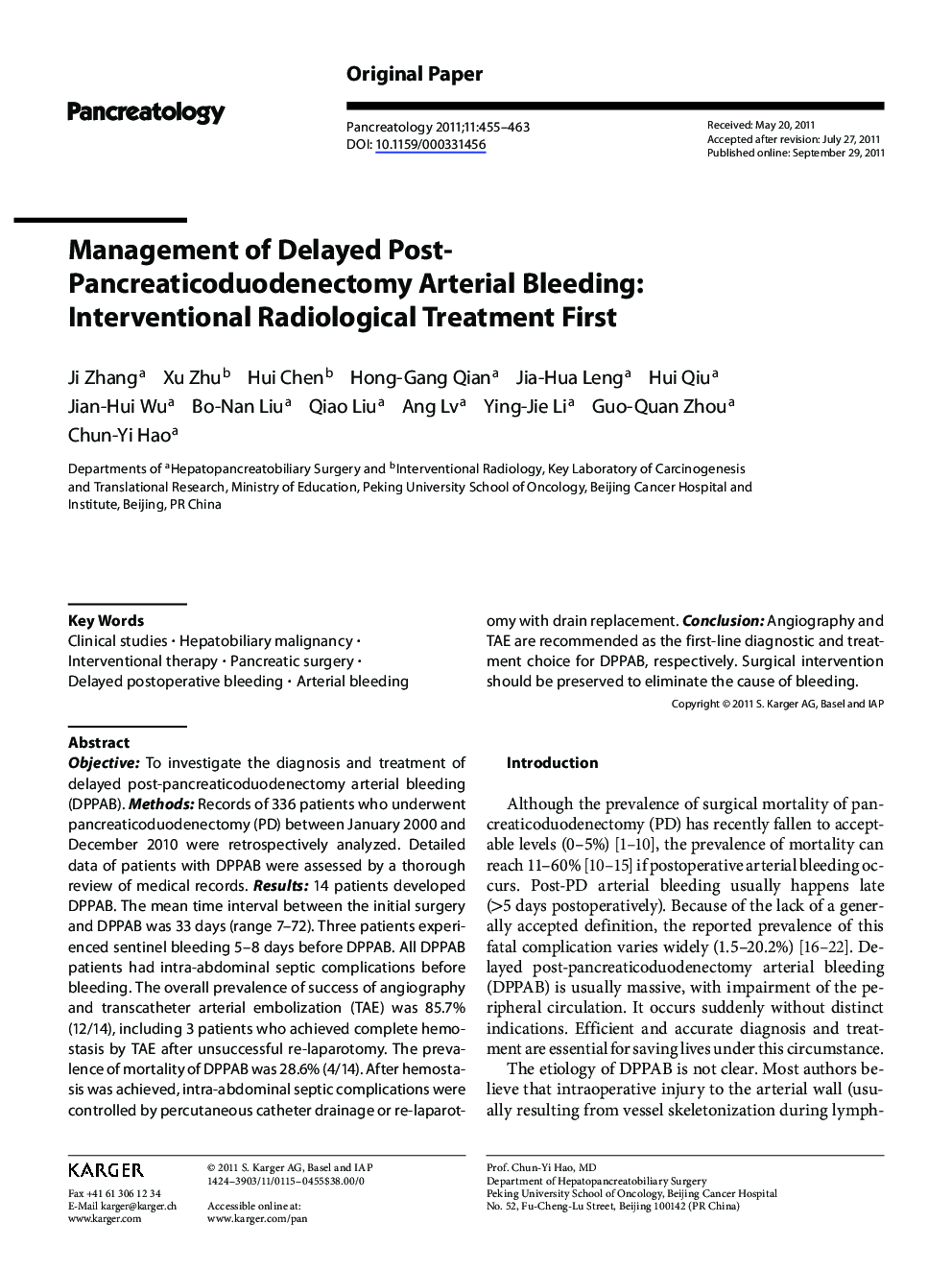| Article ID | Journal | Published Year | Pages | File Type |
|---|---|---|---|---|
| 3318124 | Pancreatology | 2011 | 9 Pages |
Abstract
Objective: To investigate the diagnosis and treatment of delayed post-pancreaticoduodenectomy arterial bleeding (DPPAB). Methods: Records of 336 patients who underwent pancreaticoduodenectomy (PD) between January 2000 and December 2010 were retrospectively analyzed. Detailed data of patients with DPPAB were assessed by a thorough review of medical records. Results: 14 patients developed DPPAB. The mean time interval between the initial surgery and DPPAB was 33 days (range 7-72). Three patients experienced sentinel bleeding 5-8 days before DPPAB. All DPPAB patients had intra-abdominal septic complications before bleeding. The overall prevalence of success of angiography and transcatheter arterial embolization (TAE) was 85.7% (12/14), including 3 patients who achieved complete hemostasis by TAE after unsuccessful re-laparotomy. The prevalence of mortality of DPPAB was 28.6% (4/14). After hemostasis was achieved, intra-abdominal septic complications were controlled by percutaneous catheter drainage or re-laparotomy with drain replacement. Conclusion: Angiography and TAE are recommended as the first-line diagnostic and treatment choice for DPPAB, respectively. Surgical intervention should be preserved to eliminate the cause of bleeding.
Related Topics
Health Sciences
Medicine and Dentistry
Gastroenterology
Authors
Ji Zhang, Xu Zhu, Hui Chen, Hong-Gang Qian, Jia-Hua Leng, Hui Qiu, Jian-Hui Wu, Bo-Nan Liu, Qiao Liu, Ang Lv, Ying-Jie Li, Guo-Quan Zhou, Chun-Yi Hao,
